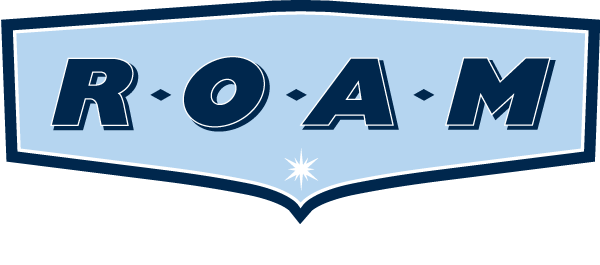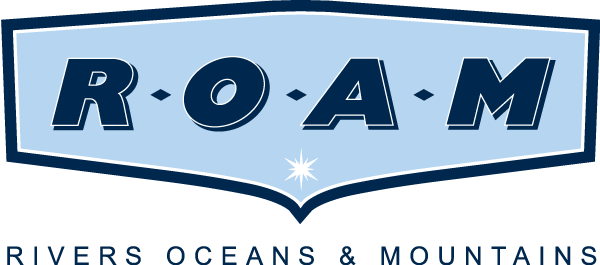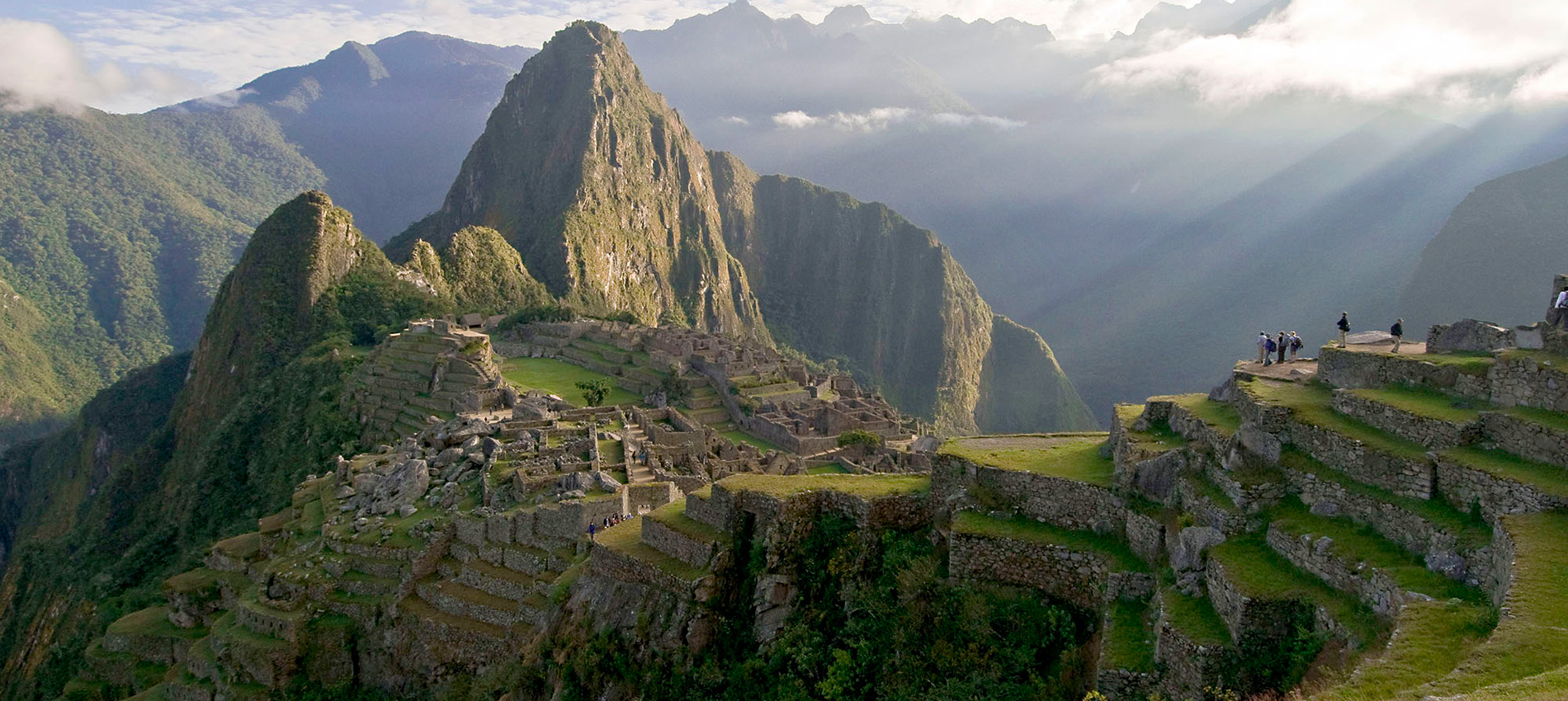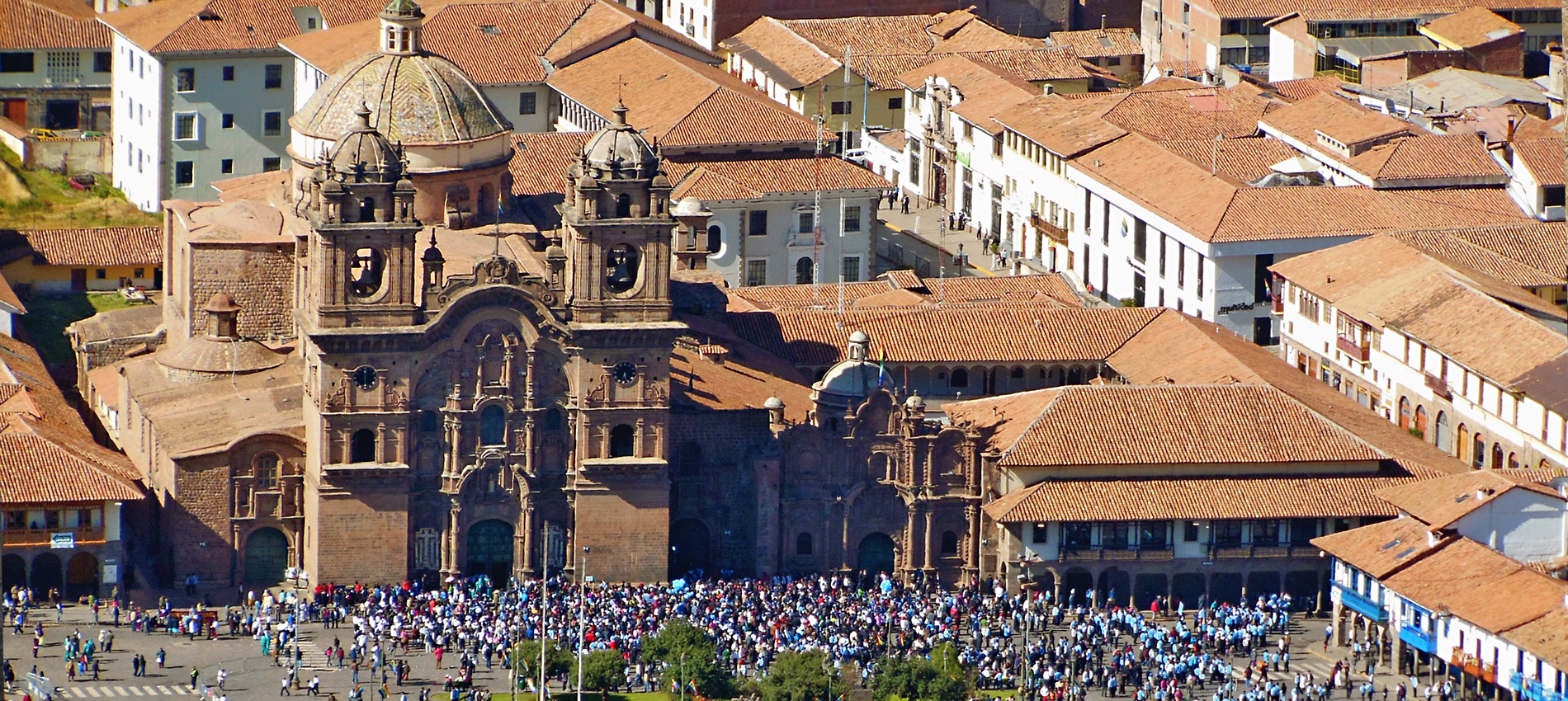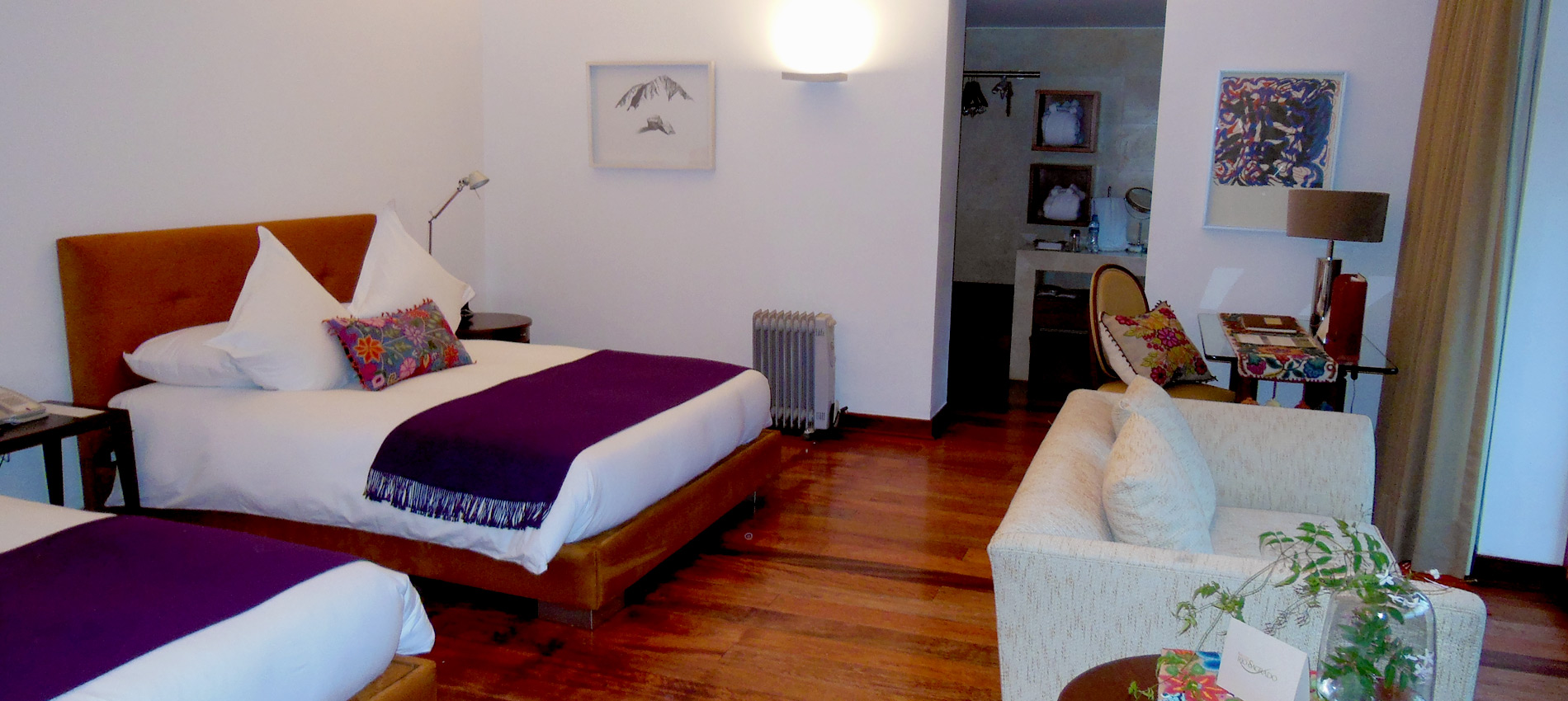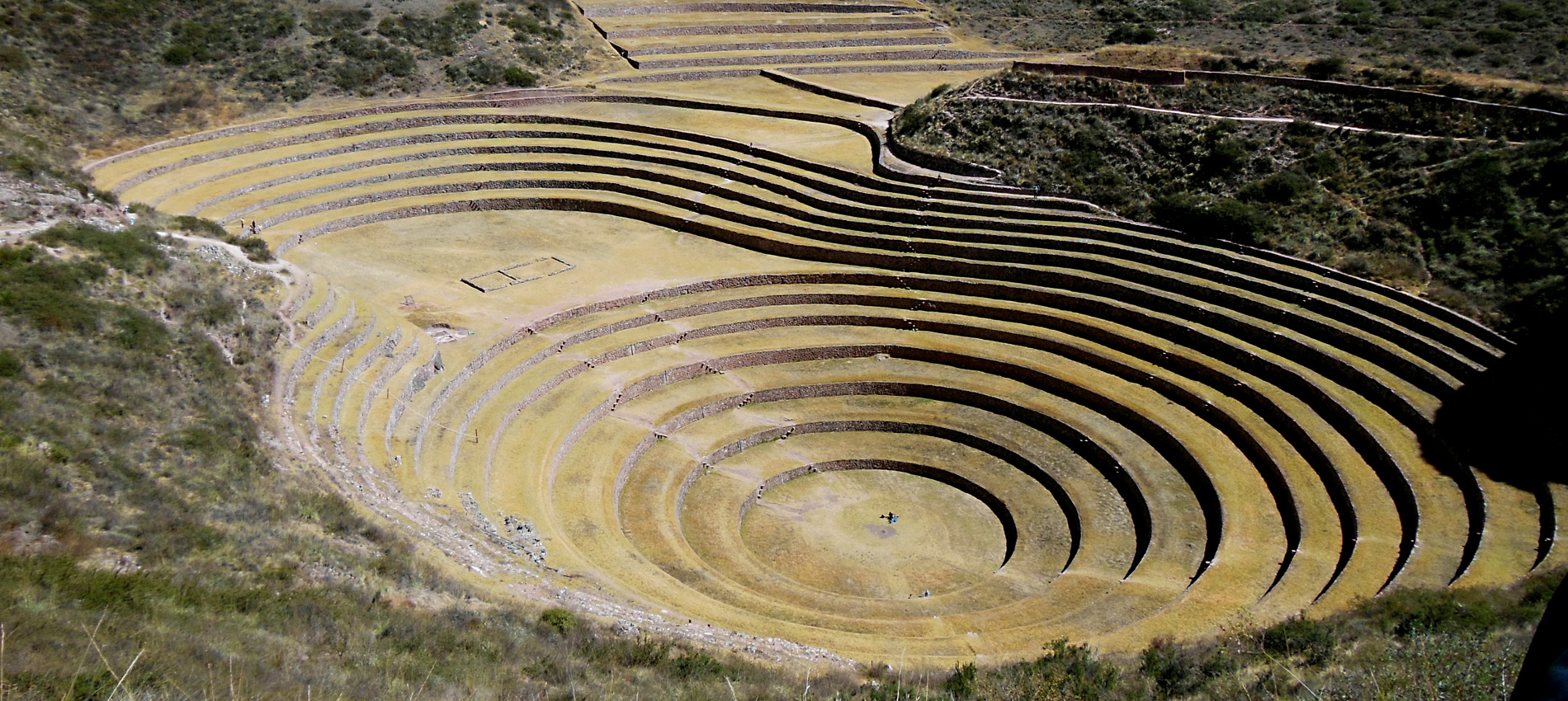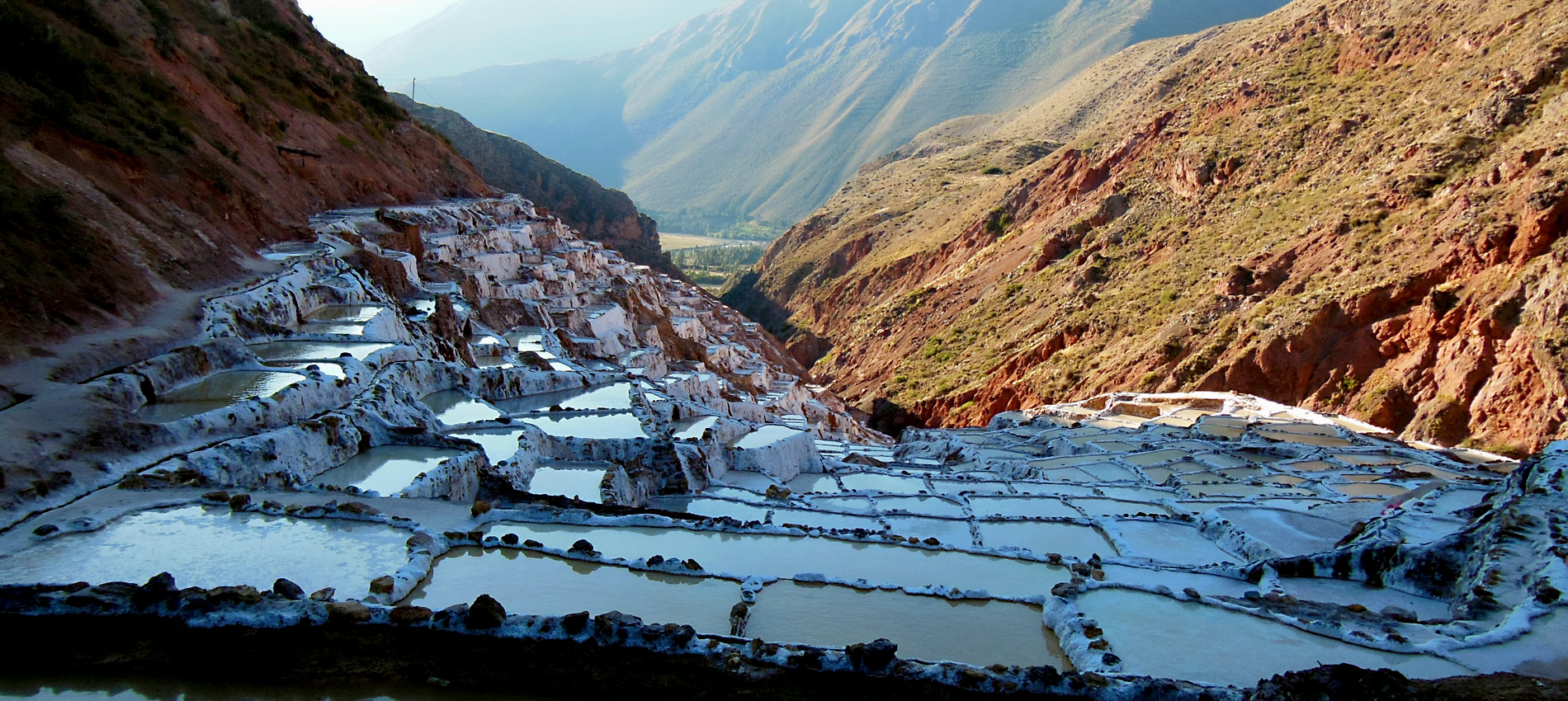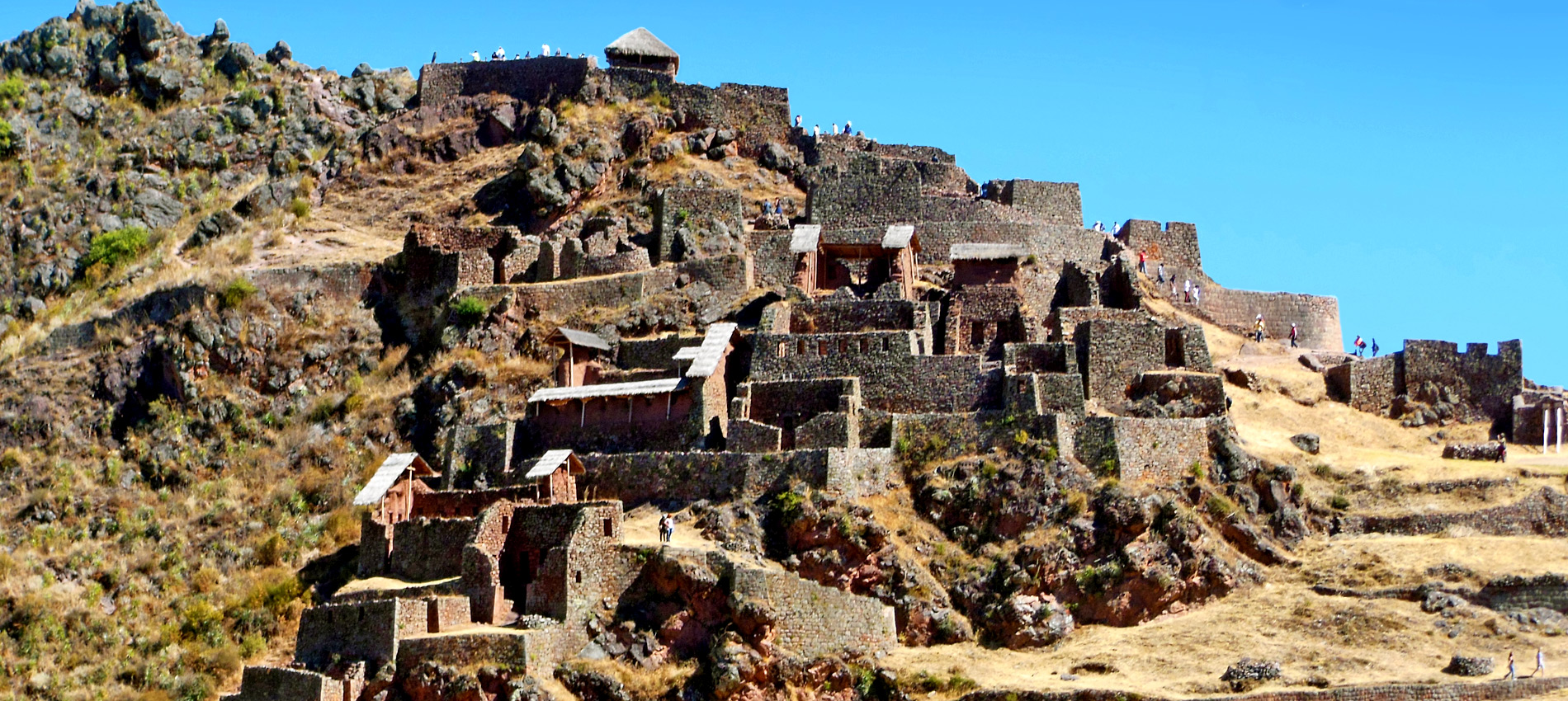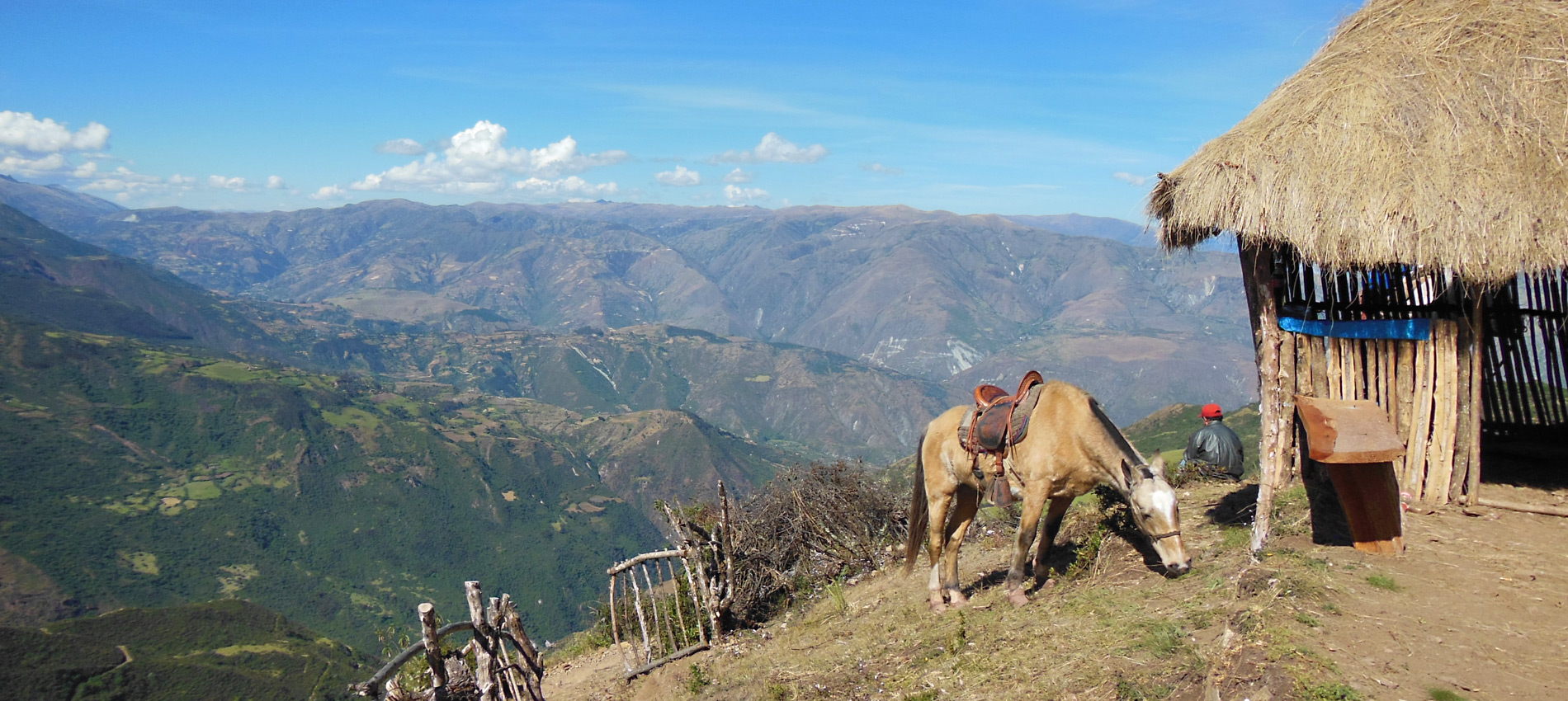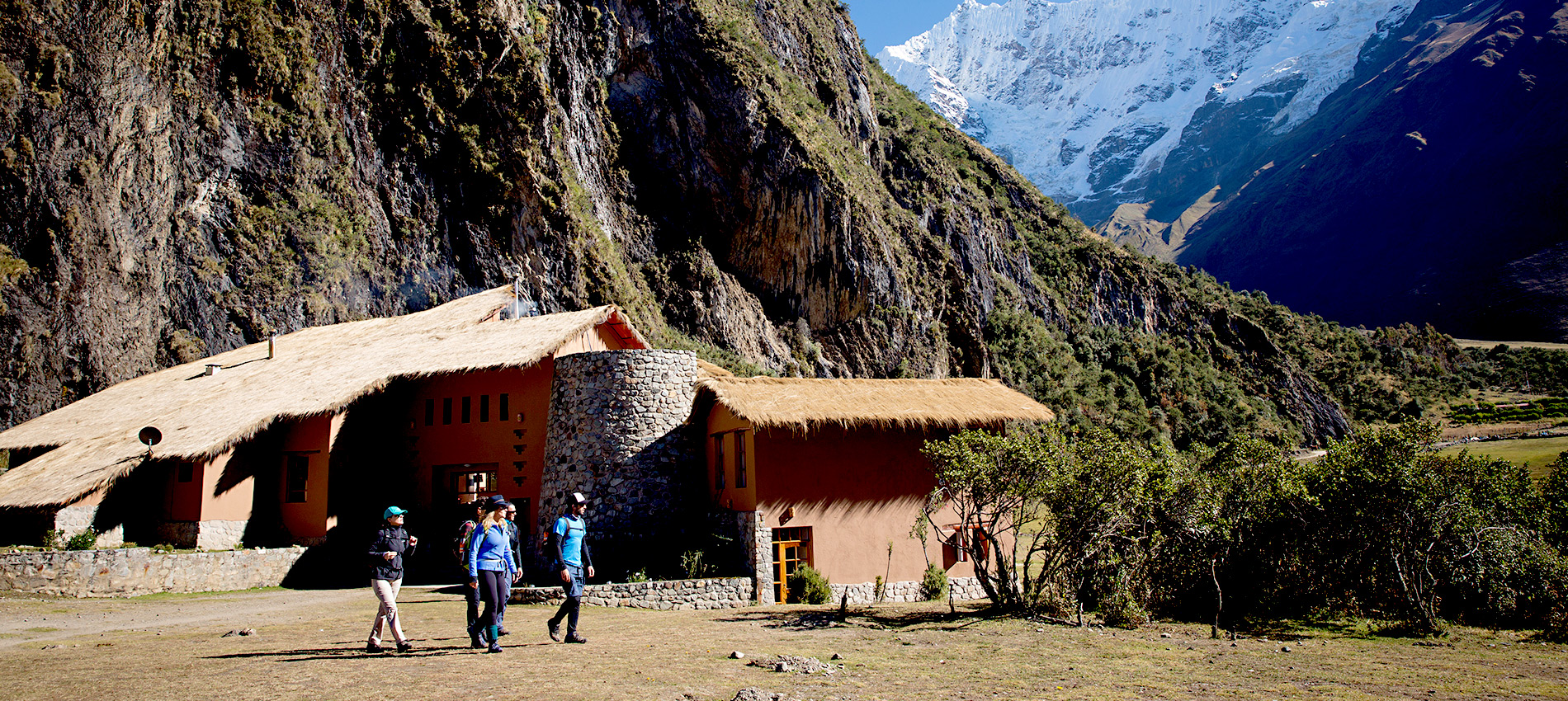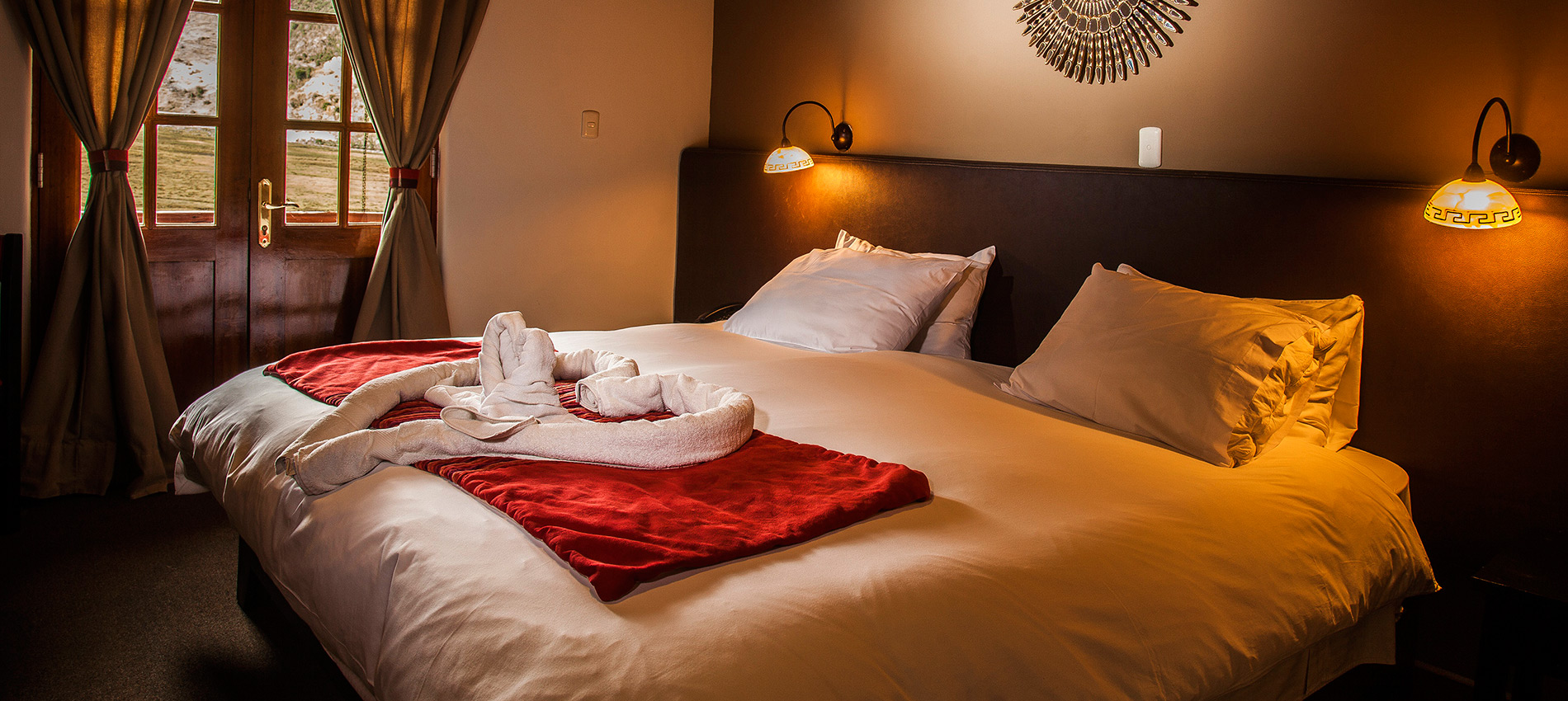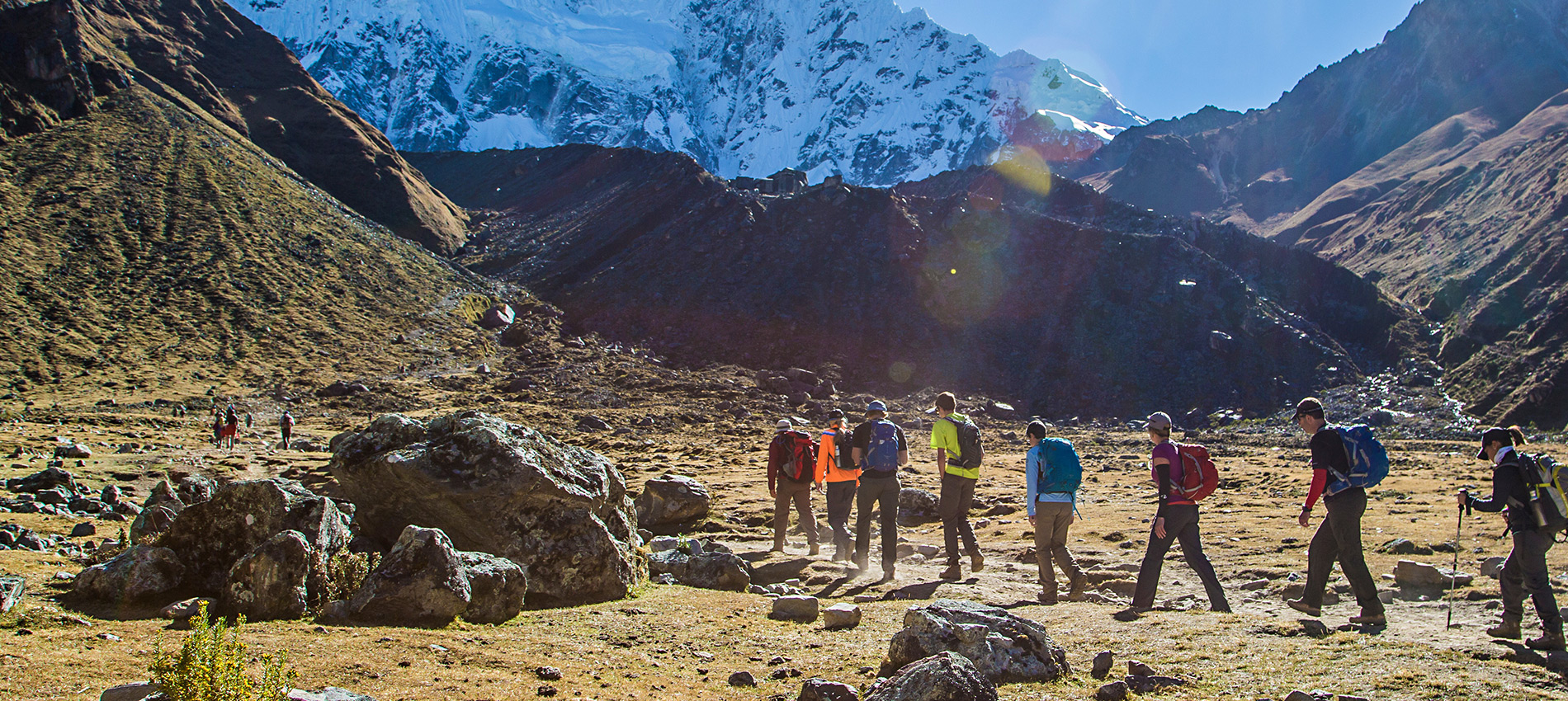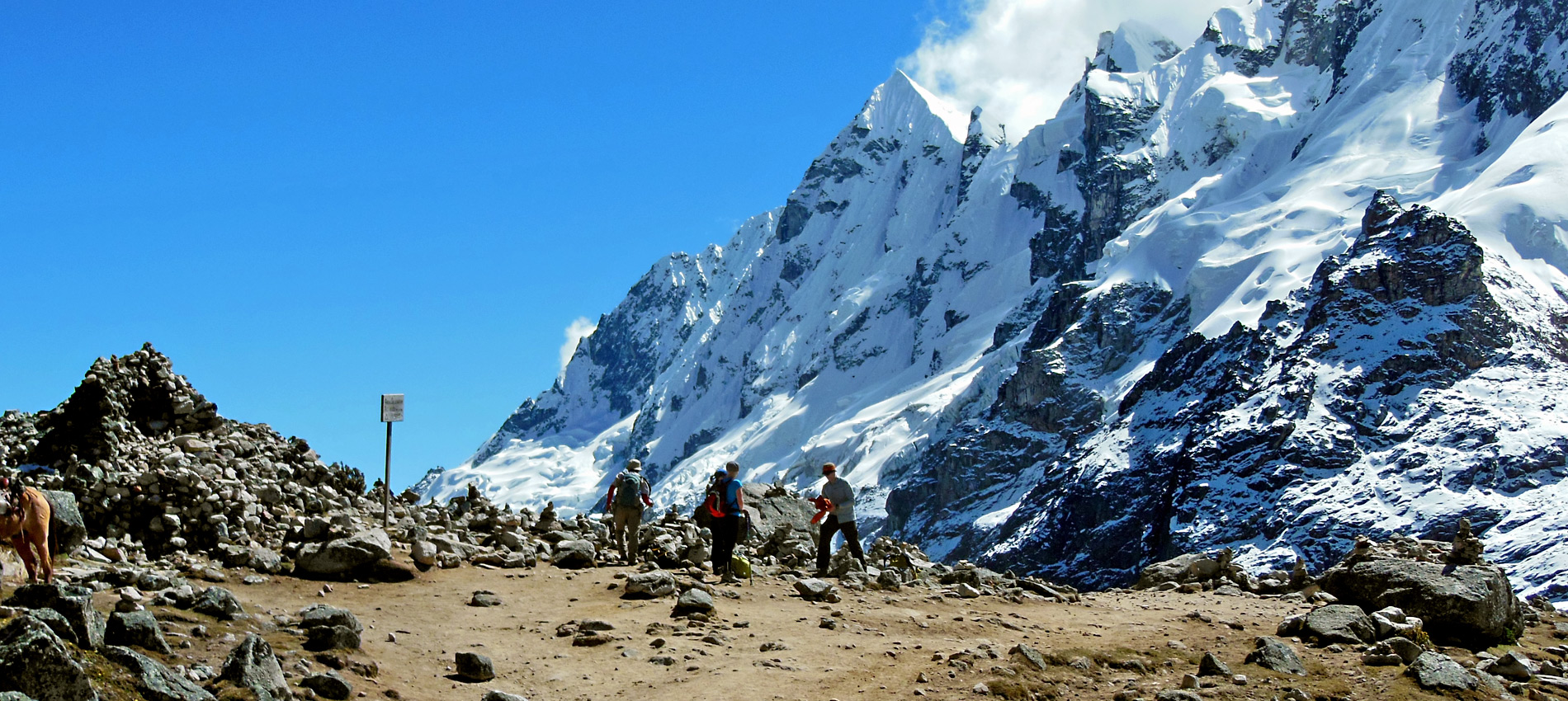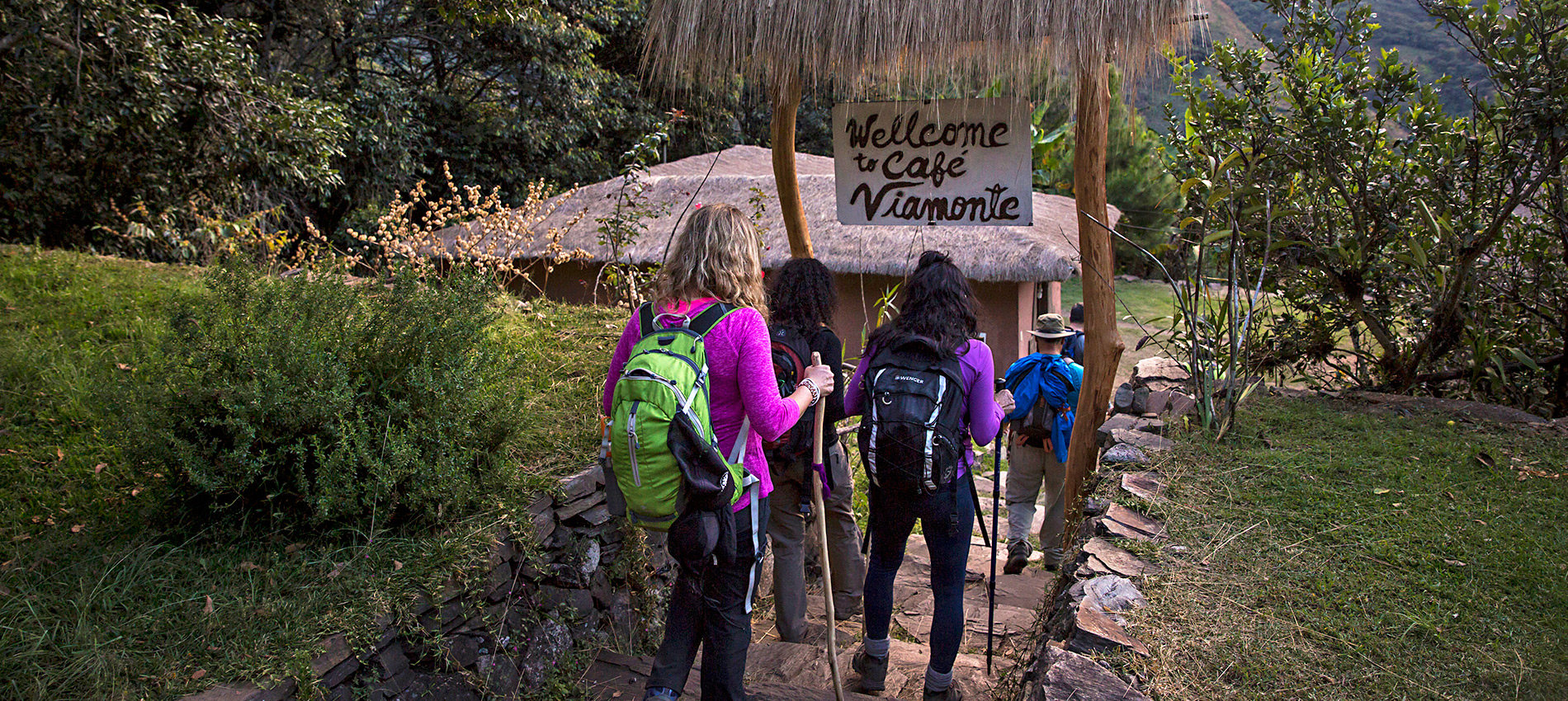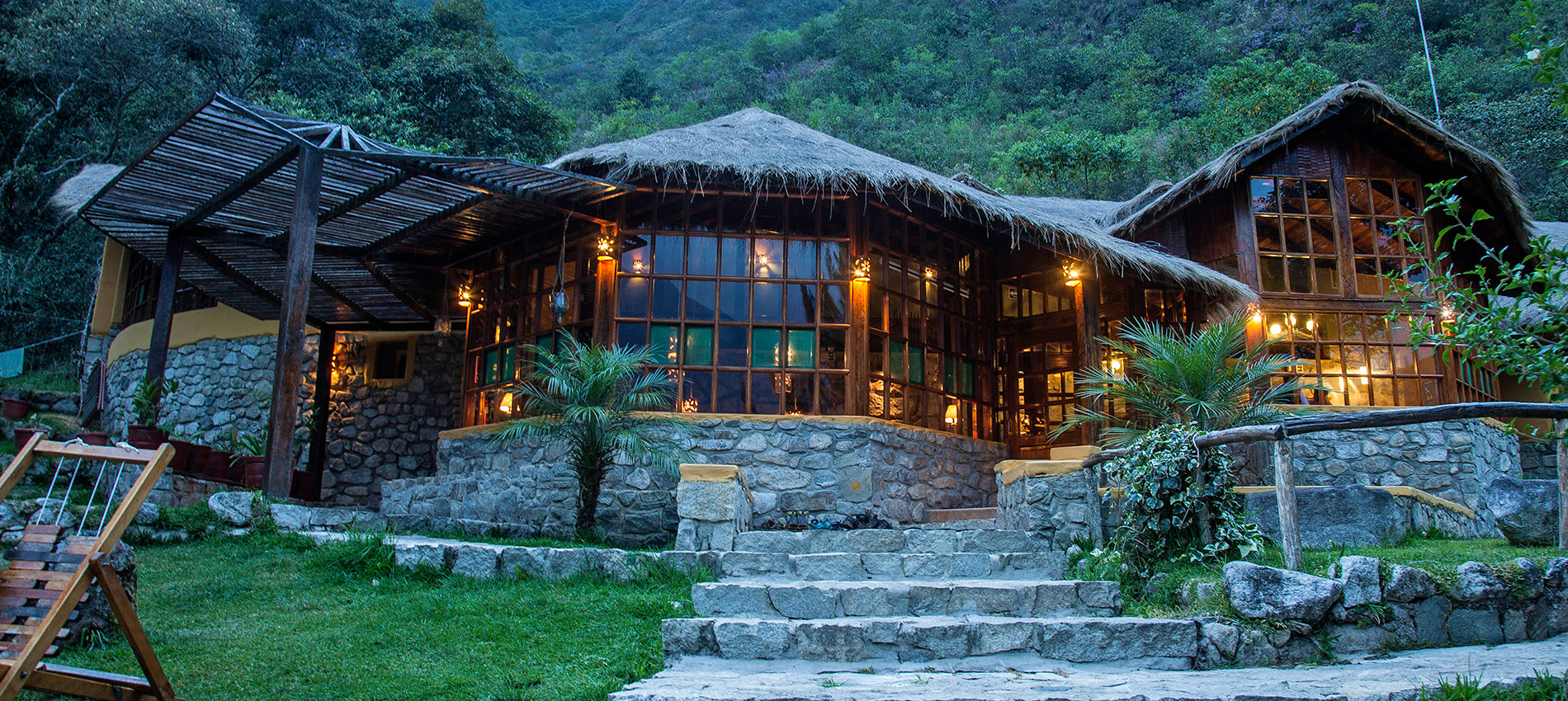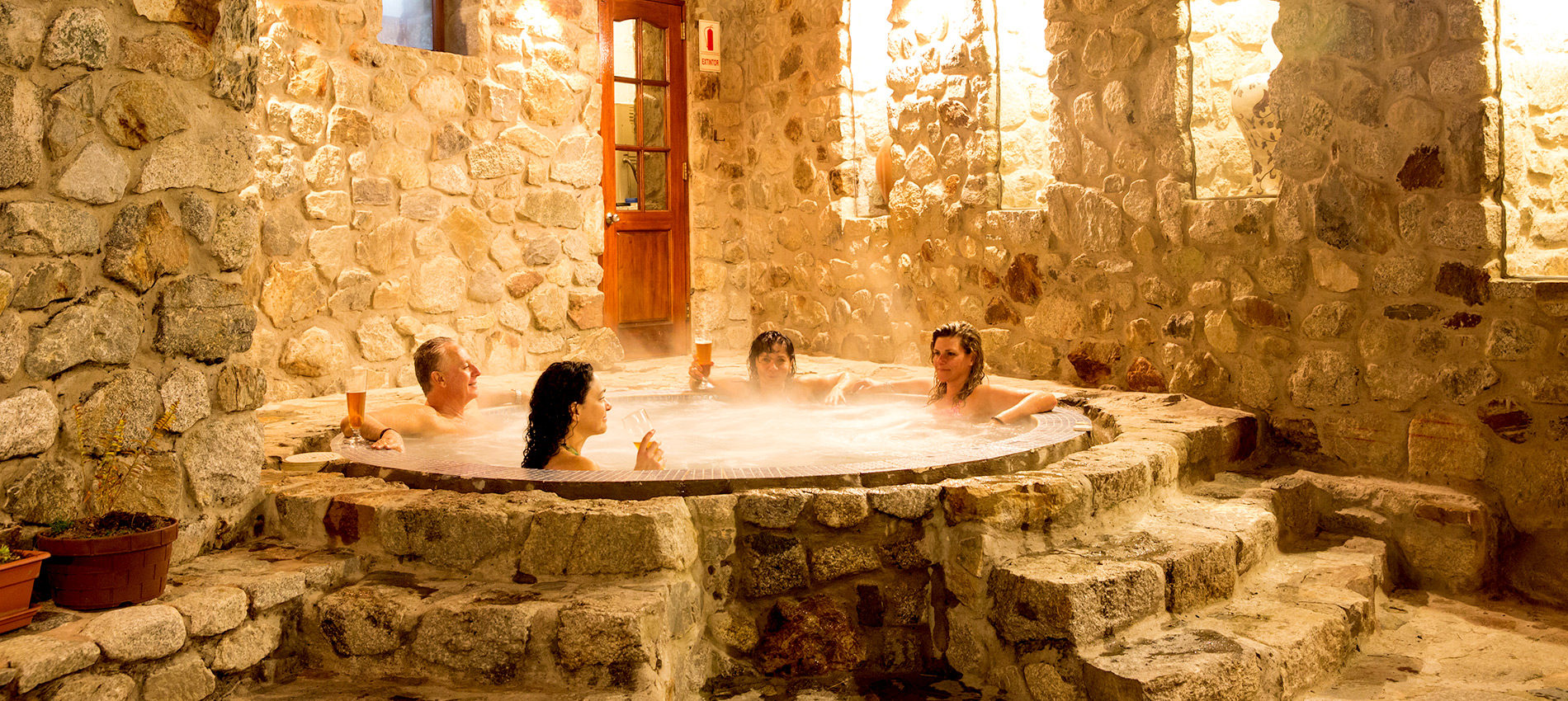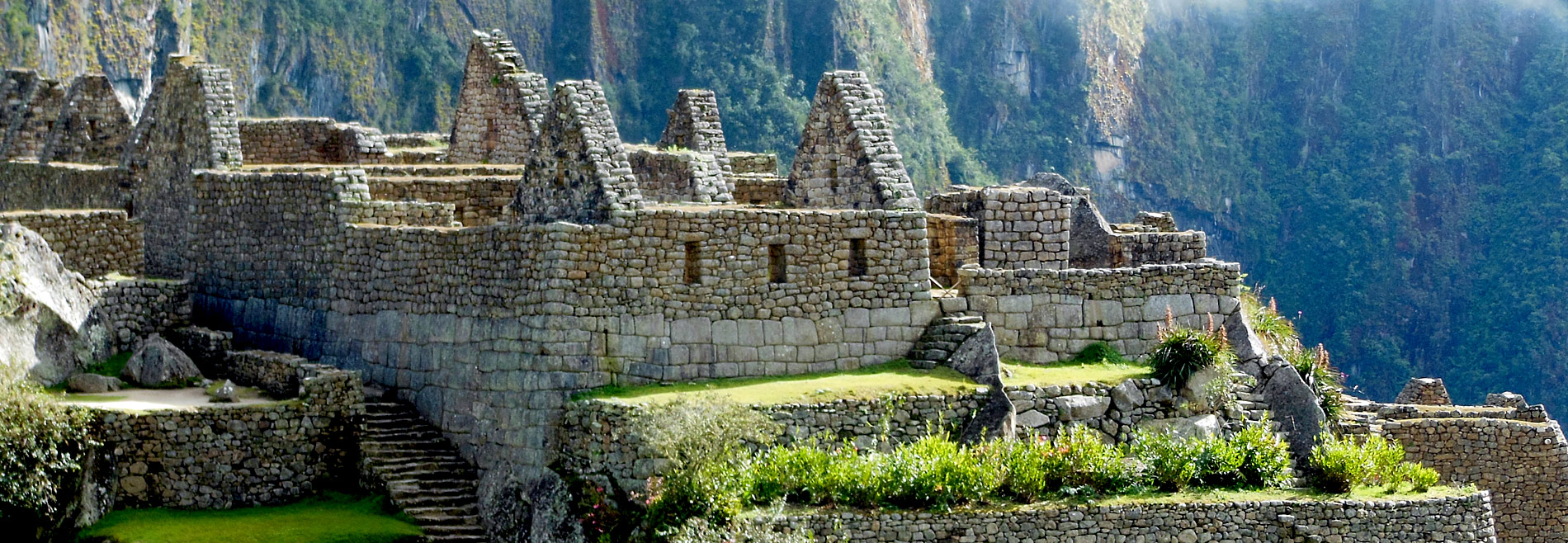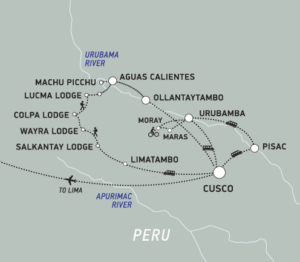12 Days of Multi-Sport and Trek
$8995
per person based on double occupancy
2025 Dates:
June 14 – 24, 2025
Other dates available by request!
Deposit: $1000 Meeting Place: Lima Gateway City: Lima Age Range: 13-80
This lodge-to-lodge trip provides participants a physical, cultural, and spiritual journey that will take you through the magnificent Andes on a trek, explore the Sacred Valley by mountain bike, foot and horseback, as well visit the legendary ruins at Macchu Picchu. Utilizing only the finest hotels available and trekking from gorgeous lodge-to-lodge makes exploring this area accessible to many. No tents, just comfy beds, chef-prepared meals, hot tubs and even optional massages each night.
Along the Salkantay trail, you will journey through varied terrain both challenging and awe-inspiring views of glacier mountain peaks, mysterious fog surrounding fields of boulders, and cattle drives through the most remote of mountain areas are sights that will only enhance the spectacular topography, lush vegetation, and intriguing archaeological areas that you will encounter. Locals, still proudly attached to their Andean heritage, will greet you along the way and give you a glimpse into their rarely seen world. Led by well-respected and extremely knowledgeable guides, you are guaranteed personal attention and a commitment to safety. The staff at the mountain-luxury lodges, situated in pristine locations along the trail, will welcome you warmly at the end of each day with the utmost in service and amenities.
The lodges are spectacular and in many cases, architectural wonders. Despite the high luxury factor on this adventure, participants will be able to challenge themselves as you trek through nine different bio-zones, changing altitudes and varied terrain. You will marvel at the exquisite beauty of the Andes, Salkantay Peak, Salkantay and Humantay Glacier Lake while meeting local Andean families in their traditional settings. Trekking in style can also be done with a conscious. ROAM and the lodges we work with are involved in number of environmental and social initiatives that maintain the natural integrity and improve quality of life in the region. This trip will inspire you by the majesty of your surroundings and the knowledge that you are following in the footsteps of the Incas…
Itinerary at a Glance
- Arrive Lima, overnight and transfer to Cusco next morning
- Visit Sacred Valley, Pisac Market and many ruins
- Mountain bike to the salt mines of Maras and visit the archaeological wonder of Moray
- Shuttle to Salkantay Lodge in the Soraypampa Valley and spend the afternoon relaxing before dinner beneath the towering peak of Salkantay, the most sacred peak in Inca mythology and at 20,500 feet
- Trek up the Rio Blanco Valley circling Humantay Peak across from the Salkantay and take in views of snow-capped peaks of the Vilcabamba Range and overnight at the Wayra Lodge
- Hike downhill above the Salkantay River, through increasingly verdant scenery to the Colpa Lodge at the confluence of three rivers
- Continue down to the Santa Teresa River Valley, through more populated rural areas with coffee plantations and orchards
- Continue our trek towards Llactapata pass for a distant but one-of-a-kind view of Machu Picchu and a visit to the Llactapata Ruins
- Begin our final descent to the Vilcanota River and the town of Aguas Calientes and overnight at the Machu Picchu Pueblo Lodge
- Revel in a full-day guided tour of Machu Picchu then transfer by train back to Cusco for a farewell dinner and a final night at the center of the Inca Empire
What to Expect on the Peru Multi-Sport and Trek
We pride ourselves in running a relaxed and always flexible schedule. Every trip is different depending upon the group, other trips in the area, and sometimes the weather. The following is a sample of what your trip might be like.
DAY ZERO (June 19)
Today you arrive in Lima, Peru and transfer to your hotel. There is a Wyndham Hotel across the street from the airport or many properties in the Miraflores part of Lima
DAY 1 (June 20)
Today you’ll take a 1-hour flight to the magical city of Cusco. Upon our arrival, you are met by your ROAM guide and taken to your hotel in the heart of Cusco city. After checking in and getting freshened up, we will depart for a short tour of the city while your body adapts to the altitude. Today’s tour will visit Cathedral and Koricancha temples. Tonight we will enjoy a welcome dinner a few blocks from your hotel. Overnight Cusco
Day 2
Today we will travel to the Sacred Valley of the Incas situated 2000 feet lower in elevation. En route we will will visit Sacsayhuaman, Awanacancha and the incredible Pisac Market and ruins for some shopping of local arts and crafts. Tonight we will stay in the Sacred Valley at Inkaterra Hacienda Urubama, a National Geographic “Unique Lodges of the World” property, or the beautiful Rio Sagrado resort.
Day 3
Get ready for your mountain biking adventure as we visit Maras Moray with a few surprises along the way. Your acclimatization process will be well under way and this is a great day to get some exercise and see the sites at the same time. Overnight Sacred Valley
Day 4
After another amazing breakfast, we will enjoy a morning horseback ride through some of the Sacred Valley’s most spectacular countryside. We will have lunch in a Colonial House and late in the afternoon make our way back to Cusco. This evening we join our trekking tour leader for a group orientation and discussion of the following morning’s plans. Overnight Cusco
Day 5 (June 24)
A 7 am departure has us on the road towards the Salkantay Lodge & Adventure Resort (SLAR) in the valley of Soraypampa. En route we take a short break to visit the Inca ruins of Tarawasi near the town of Limatambo (approx. 1.5 hrs from Cusco). After leaving Limatambo, we pass through the mountain village of Mollepata where we stop for a short coffee break before ascending a winding mountain road to Marcoccasa (30 minutes from Mollepata by vehicle). Here, we begin our trek to Soraypampa on an old route called the “Camino Real” (Royal Path). This is a good opportunity for us to acclimate as we enjoy a mild & beautiful 4-hour trek to the lodge. (Hiking level: moderate). Optional: if we do not wish to trek we can be transported to the lodge in the vehicle.
The lodge takes its name from the majestic peak at the head of the valley – the “Salkantay”, the 2nd most sacred peak in Inca mythology and, at 20,600 ft (6,270 m), the highest in the region. After a warm welcome by the friendly staff, we are shown to our rooms and have time to clean up or soak in the hot tub. The first afternoon is spent at leisure to adjust to the altitude. An evening briefing by the fireplace is followed by aperitifs and dinner.
Day 6
The choice of activities today is dependent upon each guests level of acclimatization. The most popular activity at Soraypampa is a half-day hike (3-4 hours. Hiking level: moderate to challenging) to a glacial lake where the more adventurous can take a very short swim! This hike is excellent for acclimatization and a first immersion into high-mountain trekking. In the afternoon, we may choose to trade the glacial swim for a relaxing soak in the outdoor hot tub. In the evening, our trekking guide will brief us on gear and the itinerary for the next four days. Breakfast, lunch and dinner are taken at the Lodge.
Day 7
This is the big day: the start of the four-day trek to Machu Picchu. We start out early on our hike up the Rio Blanco valley, circling Humantay Peak across from the Salkantay. The highest point on the trek is a pass at 4,600 m (15,000 ft); here we stop to take in views of the snow-capped peaks of the Vilcabamba Range and the south face of Salkantay towering above us. We will keep our eyes out for Andean condors, often visible in this area. From the pass we continue our descent toward the Wayra Lodge (“Wayra”: wind; “the place where the wind lives”) our destination for the evening. A hot lunch is taken en route. Dinner and overnight at the Lodge. (Hiking time: 4-6 hours. Total excursion time for day: 5-7 hours. Hiking level: challenging with a 15,000ft mountain pass).
Day 8
Following the long first day of trekking, we enjoy a leisurely breakfast at Wayra Lodge. We then hike downhill, above the Salkantay River, through increasingly verdant scenery. Upon arrival at our next lodge, we are treated to a “Pachamanca”-style lunch (subject to availability; traditional underground stone cooking).
The Colpa Lodge is located in an open promontory at the confluence of three rivers. The outdoor hot tub in this lodge has prominent views of lush green mountains and a small, far-away, local town. Dinner and overnight at the lodge. (Hiking time: 3-4 hours. Hiking level: moderate).
Day 9
After an early breakfast we head down the Santa Teresa River Valley, through more populated rural areas with coffee plantations (said to be one of the best organic coffees in the world!), bananas, “granadillas”, and orchards. We stop along the river for a hot picnic lunch. After another hour of trekking, a private vehicle arrives to take us to the beginning of the “Llactapata Inca Trail” (30-minute drive). From the head of the trail it is a short climb (30 min.) to the Lucma Lodge, set in an avocado orchard. We arrive in time to explore the small village of Lucmabamba and possibly meet with members of the local community. (Hiking time: 5-6 hours. Total excursion time for day: 6-8 hours. Hiking level: moderate to challenging, basically due to distance, not terrain).
Day 10
After an early breakfast, we set off on the last day of our trek. We head uphill for 2-3 hours towards Llactapata pass (2,700 m/8,900ft), where we come upon a distant but quite special view of Machu Picchu from the southwest. This is a view few tourists ever see. An added value are the Llactapata Ruins, which have recently been restored. Lunch is provided at the observatory, in view of Machu Picchu. We then begin our final descent to the Aobamba River through lush bamboo forests and more orchards and coffee plantations (2-3 hour descent). Aguas Calientes and Machu Picchu are a short (30 minutes), scenic train ride away. (Total hiking time: 4-6 hours. Hiking level: moderate to challenging). We then arrive in Aguas Calientes to check-in to our hotel for the night.
Day 11
We wake up early to have breakfast at the hotel and then make our way to the bus station for the ride up to Machu Picchu (30 min). A complete guided tour of Machu Picchu will be provided (2 hours). We will have additional time after the initial tour to explore the site on our own (there is a lot to see and do). In the afternoon we will take the train to Ollantaytambo (1.5 hrs), where a private vehicle will be waiting to take us to Cusco (1.5 hrs). Upon arrival in Cusco (approximately 7-8pm) we will be dropped off at our hotel. Overnight at Cusco hotel.
Day 12
Transfers to the airport for flights to Lima. Evening flights home
Accommodations
In Cusco, Hotel Monasterio
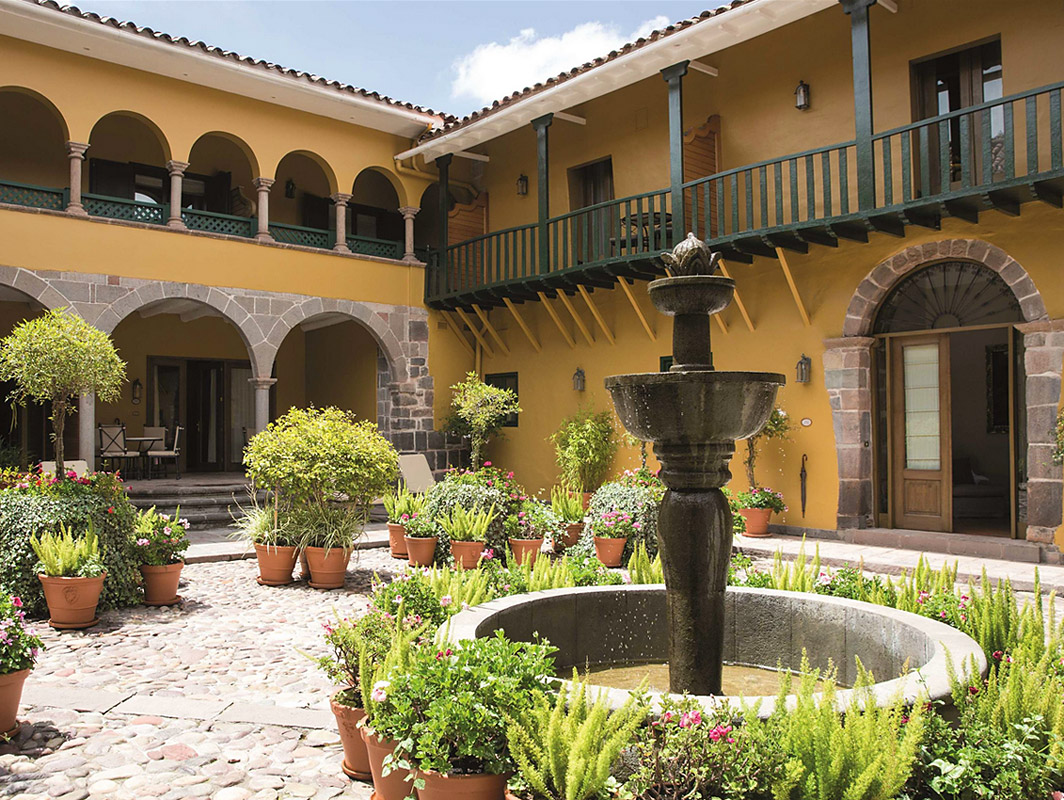
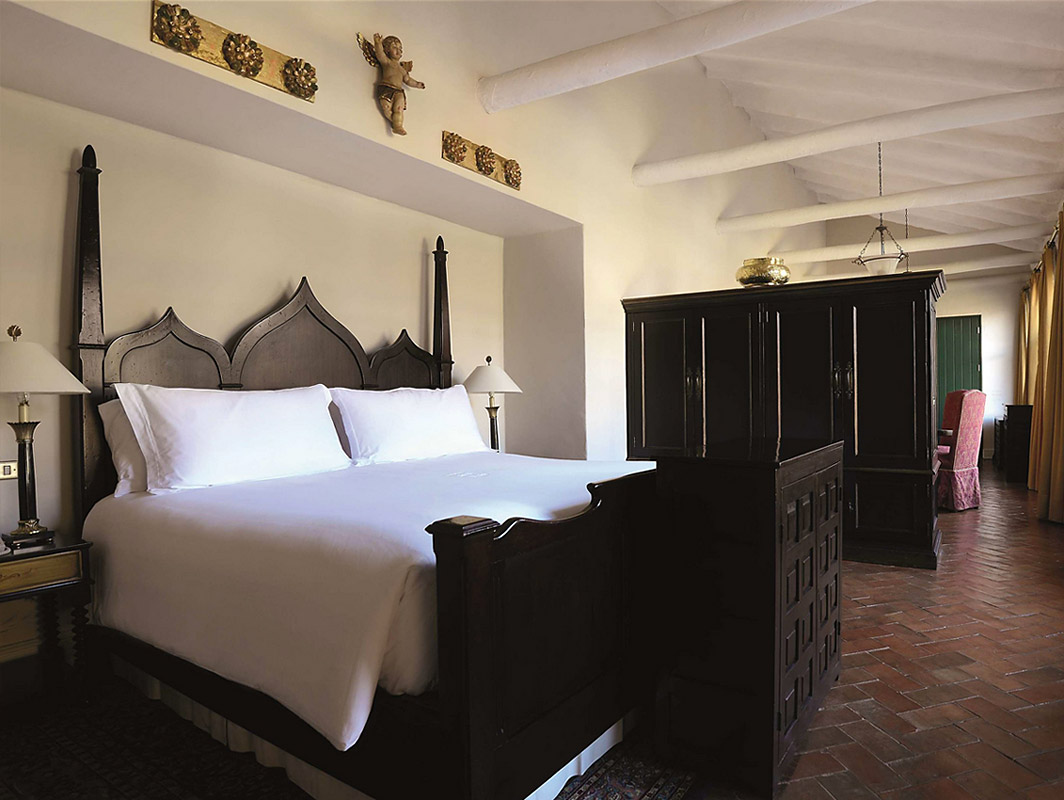
Hotel Monasterio offers one of the most unique experiences in Cusco. A protected national monument, this converted monastery showcases restaurants and boutique rooms and suites, all clustered around a tranquil central courtyard. The ideal hotel from which to discover the delights of the city, its doors open to a vibrant scene of old and modern architecture, markets, galleries and cafes serving exciting Andean cuisine.
In the Sacred Valley, Rio Sagrado
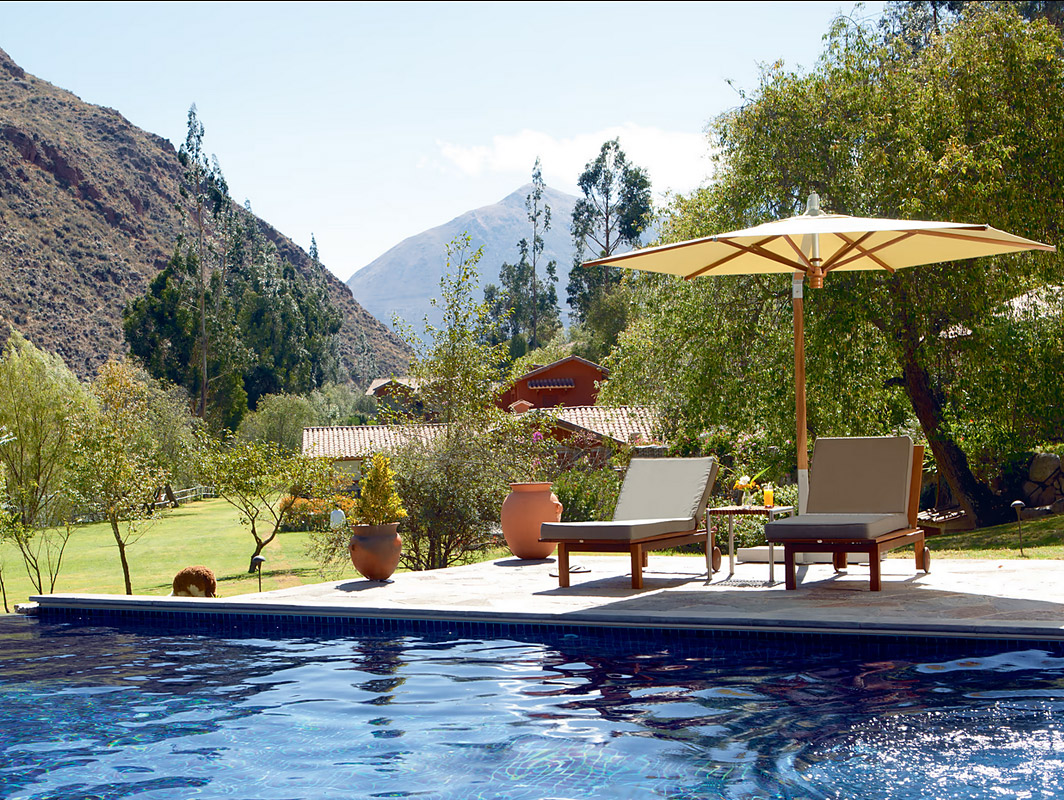
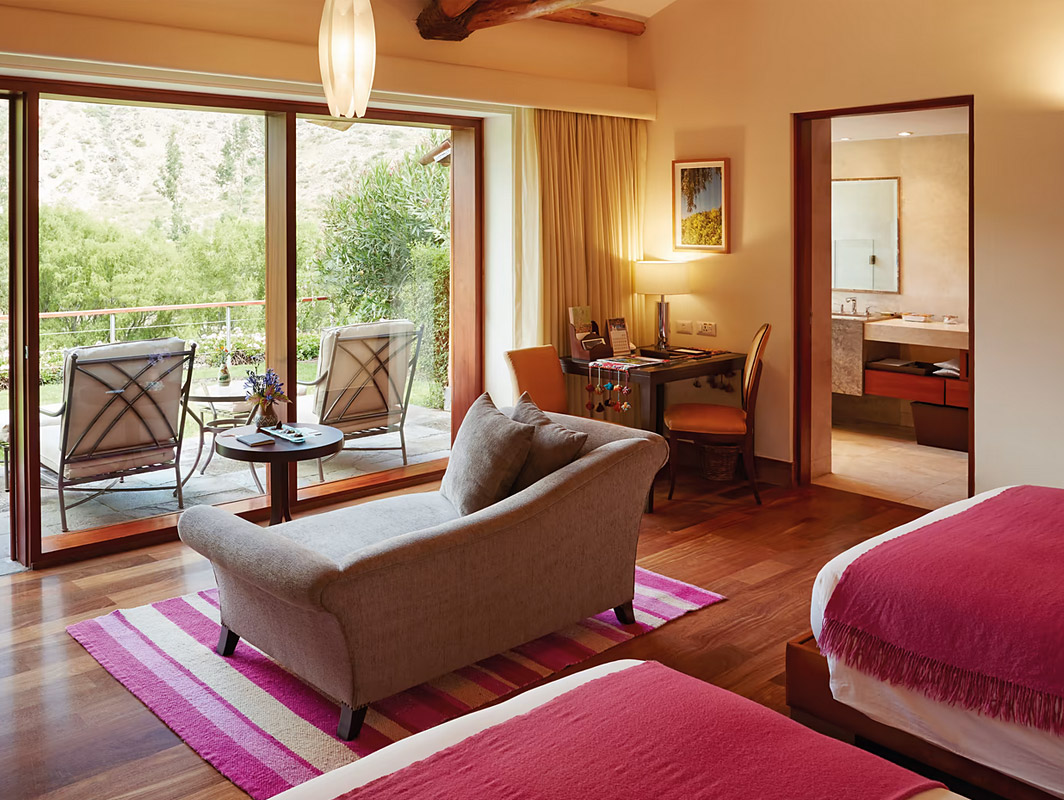
Built to resemble a rural Peruvian village, Rio Sagrado is one of the most unique luxury hotels in Peru. A stay here lets you experience the majesty of life in the mountains. Situated at a lower altitude than nearby Cusco, the hotel provides the perfect environment in which to acclimatize, and is an ideal base to explore the Sacred Valley and Machu Picchu.
In the Sacred Valley, Inkaterra Hacienda Urubamba

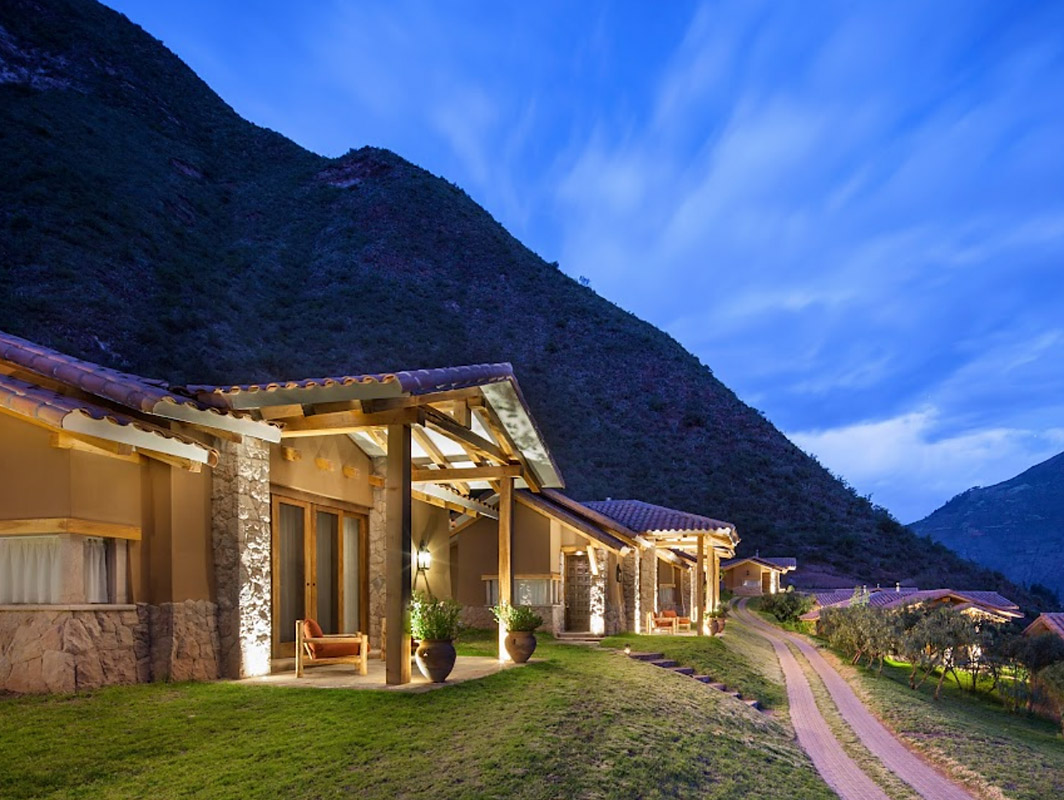
Inkaterra Hacienda Urubamba is a contemporary hacienda-style hotel in the Sacred Valley. All rooms in the Casa Hacienda and stand-alone luxury casitas feature breathtaking views of the valley, immersing guests in open space, serenity and relaxing solitude. Architecture and interiors are inspired on the area’s cultural history, with colonial furniture, authentic Inca masks and handcrafted woodwork that add to the hacienda’s local charm.
In Aguas Calientes, Inkaterra Machu Picchu Pueblo
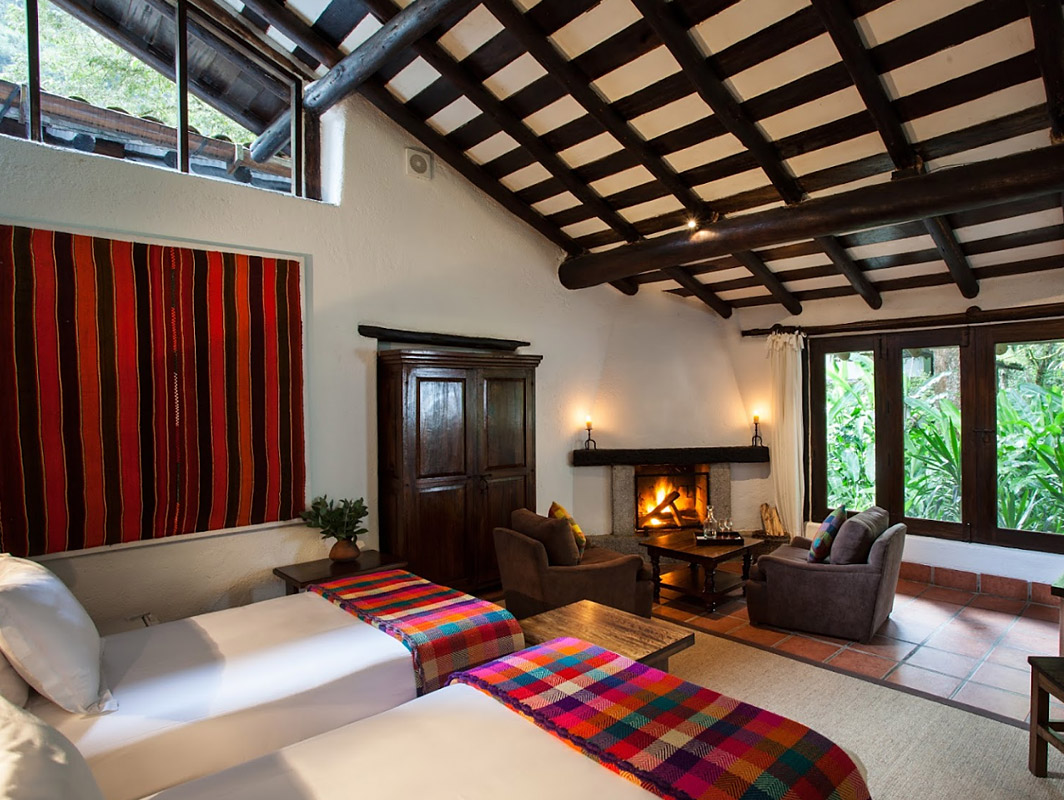
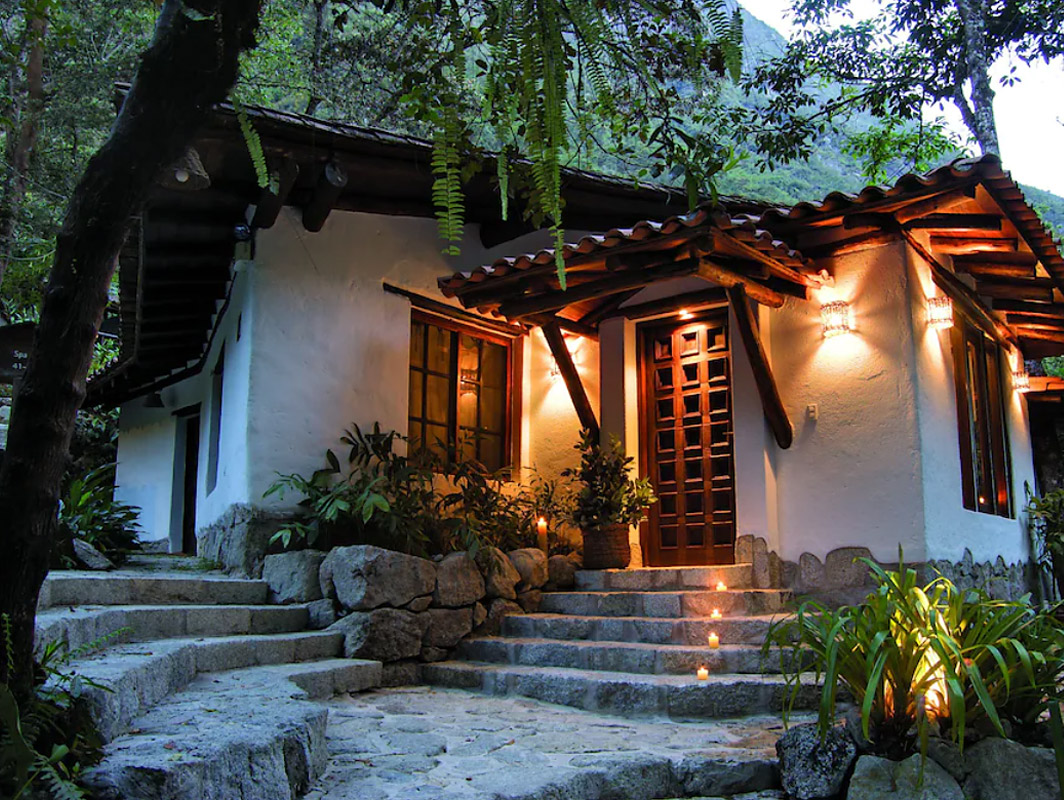
Inkaterra Machu Picchu Pueblo Hotel is an intimate Andean village with terraced hills, waterfalls, stone pathways and 83 whitewashed adobe casitas tucked away in the cloud forest and just steps away from bustling Aguas Calientes. The property has 12 acres of exquisite natural beauty, which includes 214 bird species and the world’s largest native orchid collection.
About the Region
History
For many, the first word that comes to mind when thinking of Peruvian history is “Inca”. Certainly, the Inca civilization is the most studied and well recognized of South America’s pre-Colombian cultures, but Peru’s first inhabitants were nomadic hunters who migrated across the Bering Straight and into the Americas about 20,000 years ago.
Domestication of the llama, alpaca and guinea pig began by about 4000 BC and around the same time people began planting seeds and learning simple horticulture methods. Various forms of the Andean staple, the potato, began to be grown as a crop around 3000 BC and weaving and fishing took their first form. Between 2000 and 1000 BC ceramics began to develop from basic undecorated pots to sculpted, incised and simply colored pots of high quality. Horticulture improved dramatically with the development of irrigation as agricultural terraces began to be constructed in the highlands.
Between the initial years of civilization in Peru and the rise and fall of the Inca Empire, many cultures shared in the development of weaving, pottery, agriculture, religion and architecture. But for all its greatness, the Inca Empire existed for barely a century. Beginning in the 1430s, the Inca conquered most of the cultures in the area stretching from southern Colombia to central Chile. Like the Wari before them, the Incas imposed their way of life on the peoples they conquered and created magnificent cities with impressive urban developments. Thus when the Spanish arrived, most of the Andean area had been politically united by Inca rule.
Archaeology
Peru is unequaled in South America for its archeological wealth, and many experts find Peru’s ancient sites and cultures as exciting as those of Mexico, Egypt and the Mediterranean. Learning about and visiting these centuries-old ruins is one of the highlights of the Peru Multi-sport. This archaeological exploration begins in the city of Cusco, the center of the Inca Empire with a city tour rich in Inca and Spanish Colonial heritage and to the ruins of Sacsayhuaman, Kenko, and Tambomachay. In the Sacred valley we make stops at Ollantaytambo, Moray and Pisac and an unforgettable visit to Machu Picchu.
Culture
Peru is multi-cultural society, with one part containing predominately white and mestizo middle and upper classes, and the other made up of mostly the poor Indian “campesinos”. Ninety percent of the population is Roman Catholic, and soccer and bullfighting are among the most popular pastimes.
Traditional Andean music is popularly referred to as “musica folklorica” and is frequently encountered at street fairs and fiestas. The most representative wind instruments are quenas. Although string instruments were introduced by the Spanish musica folklorica groups make use of the charango, a tiny 10-stringed guitar with the box traditionally made of an armadillo shell. Percussion instruments include drums made from hollowed-out tree trunks and stretched goatskin and rattles of goat hooves.
Peruvian crafts are based on pre-Hispanic necessities such as weaving, pottery, and metallurgy. Today, beautifully colored woven cloth is seen in traditional ponchos, belts, rugs and tapestries. Pottery and jewelry are based on ancient designs; rituals and heritage are available for purchase or barter along with woven goods throughout the Andean highlands.
Geography
Peru lies in the tropics just south of the equator and can be divided into three distinctly different geographical regions: the Pacific coastal strip, the Andes Mountains and the Amazonian lowlands. On the coast, the capital city of Lima and the world-class Pacific surf are mainly desert, extending south to the Atacama Desert, one of the driest places on earth.
Second only to the Himalaya, the Andes rise to over 18,000 feet just miles from the Peruvian coast with year-round glaciers over 15,000 feet. Between 9,000 feet and 13,000 feet lie agricultural lands that support half of Peru’s population. This rugged Andean landscape boasts dramatic jagged ranges separated by deep, vertical canyons rewarding you with incredible mountain scenery that sets the backdrop for much of our Peru Multi-Sport.
The eastern slopes of the Andes are cloaked in green cloud forest receiving abundant rainfall as they drop into the fabled Amazon basin. Over half of Peru lies within the vast wilderness of the Amazon basin which is penetrated by few roads and supports less than 5% of the country’s population. However, there are thousands of animal and bird species that call the remote jungle home, making Peru one of the most biologically diverse nations on the planet.
